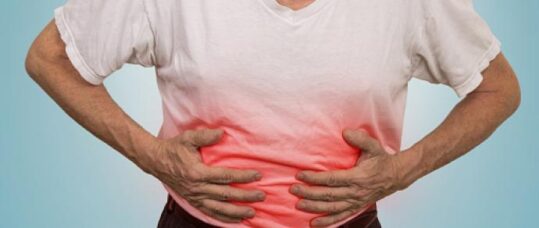Crohn’s ileitis

A primary care nurse’s quick guide to…
Crohn’s ileitis
Key learning points:
1. Crohn’s ileitis is inflammation of the ileum caused by Crohn’s disease
2. Crohn’s disease is difficult to distinguish from many other conditions but well-documented environmental and heritable risk factors increase suspicion that referral is necessary
3. Drug treatment is initiated in secondary care but primary care has a significant role in maintenance, adherence, care co-ordination, education, advice and support
Irritable bowel syndrome, gluten intolerance, fermented foods and the need to nurture your fauna… Matters of the gut have become fashionable. But for those with Crohn’s disease, a chronic inflammatory condition of the gastrointestinal tract, gut awareness is far from a fad.
The National Institute for Health and Care Excellence (NICE) uses figures that put the prevalence of Crohn’s disease at about 145 per 100,000 people in the UK.2 Here’s a quick guide to the condition, with a particular focus on its most common form: Crohn’s ileitis.
What is Crohn’s ileitis?
Ileitis is inflammation of the ileum. It is often caused by Crohn’s disease, a chronic inflammatory disease of the gastrointestinal tract.1,2
Crohn’s disease affects any part of the gastrointestinal tract, from the mouth to the anus, but the ileum is most commonly affected. The location of the disease in individual patients remains broadly stable.1,2,3
In Crohn’s disease, inflammation extends through all the layers of the gut wall. Crohn’s disease is, along with ulcerative colitis, part of the condition known as inflammatory bowel disease.4
Spotting the signs and symptoms
Crohn’s disease presents with a wide range of signs and symptoms, depending on location and severity and the presence or absence of complications such as fistula and abscess. It can be difficult to distinguish between Crohn’s disease and other conditions including ulcerative colitis, gastroenteritis, diverticulitis and cancers.2
The symptoms of Crohn’s disease particularly presentin ileitis include diarrhoea, and cramping or pain in the right lower part or middle of the abdomen. Ileitis is often accompanied by significant weight loss.5
Crohn’s disease may also present with extra-gastrointestinal manifestations involving the eyes, joints, skin and liver, including arthritis,osteoporosis, gallstones and aphthous ulcers.It most commonly presents in adolescence and early adulthood and affects men and women equally.2
Related Article: Diagnosis Connect service will link people to advice from charities
The causes are not well understood, but they are thought to be an interaction between environmental and immunological factors. Well-documented risk factors and genetic associations include:
• Smoking.
• Family history of inflammatory bowel disease.
• Appendectomy.
• NSAID use.
• Use of oral contraceptives.2
Crohn’s disease should be suspected in children or adults with otherwise unexplained persistent diarrhoea and abdominal pain or discomfort. Suspicion should be heightened if the patienthas:
• A history of similar episodes.
• Weight loss (or in children, failure to grow).
• Anorexia.
• Fatigue.
• Fever.
• Malabsorption.
• Mouth ulcers.
• Fistula.
• Abscess.
• A relative with inflammatory bowel disease, coeliac disease, or colorectal cancer.2
Diagnosis
A suspicion of Crohn’s disease should be referred to a secondary care gastroenterologist. The patient should be admitted as an emergency if they have bloody diarrhoea and fever or tachycardia.2
NICE recommends that, when referring, primary care professionals should arrange for the following tests to be available for the appointment:
• Full blood count – to test for anaemia, and increased platelets suggestive of inflammation.
• C-reactive protein and erythrocyte sedimentation rate – an increase suggests presence of inflammation.
• Urea and electrolytes.
• Liver function tests – including serum albumin, low levels of which may suggest malnutrition.
• Stool microscopy and culture – to help exclude infections.2
The gastroenterologist may carry out colonoscopy, endoscopy, biopsy or scans to determine the diagnosis.5
Management
Related Article: CVD prevention must be national health priority, says report
Not all patients who have Crohn’s disease will need drug treatment; those with mild symptoms may experience symptom resolution without it.2
Drug treatment for Crohn’s disease aims to control symptoms and induce or maintain remission. The most commonly prescribed are:
• Corticosteroids.
• Immunosuppressants.
• Aminosalicylates.2
The management of diarrhoea, fatigue and pain all have to be considered as well as complications including fistula and strictures.2
In some cases, particularly in the event of these complications, surgery may be needed to remove the affected area of the GI tract. NICE recommends that this is considered early for those whose Crohn’s disease is limited to the distal ileum.5
Notes for primary care nursing practice
While drug treatment for Crohn’s disease is initiated by a specialist gastroenterologist, continuation and monitoring may take place in general practice. Primary care practitioners can therefore encourage adherence, a significant challenge as poor adherence levels are about 40% among Crohn’s disease patients.2
Crohn’s disease is a lifelong condition, with sufferers experiencing unpredictable relapses and remissions. Primary care practitioners therefore have a role to play in supporting patients with the impact on daily life, including home, work, school and social activities. They should offer advice and signpost to other sources of support. They can encourage and support smokers to quit.2
The adequacy of pain relief may be a particular area of significance for primary care professionals; this should be taken seriously because of its significant psychosocial effects.2
There is no evidence that diet plays a role in Crohn’s disease, but NHS Choices suggests that patients could keep a food diary to assess if certain foods aggravate their symptoms. In addition, adequate nutrition needs to be considered due to malabsorption and associated risks such as osteoporosis, anaemia (iron/vitamin B12/folate deficiency), particularly in children and young adults.5
Women may have questions about the association between Crohn’s disease and oral contraceptives. NICE advises that the absolute risk increase is so low that it should not influence decisions about which type of contraception women use.2
However, primary care nurses should be alert to the need for Crohn’s disease patients to discuss their treatment before trying to have children because:
· In men, some drugs used to manage Crohn’s disease affect fertility.
· In women, some drug treatments affect fetal development, and Crohn’s disease should be well controlled before pregnancy.2
Resources
Related Article: Postnatal contraception advice reduces the risk of back-to-back pregnancies
• Crohn’s and Colitis UK provides information sheets for patients on a range of topics – https://www.crohnsandcolitis.org.uk
References
1. http://www.ncbi.nlm.nih.gov/pmc/articles/PMC2914216/
2. http://cks.nice.org.uk/crohns-disease#!topicsummary
3. http://www.ncbi.nlm.nih.gov/pmc/articles/PMC3959324/
4. http://www.crohns.org.uk/crohns_disease/what-is-crohnss-disease-cd
5. http://www.nhs.uk/Conditions/Crohns-disease/Pages/Introduction.aspx

See how our symptom tool can help you make better sense of patient presentations
Click here to search a symptom


Ileitis is inflammation of the ileum. It is often caused by Crohn’s disease, a chronic inflammatory disease of the gastrointestinal tract



